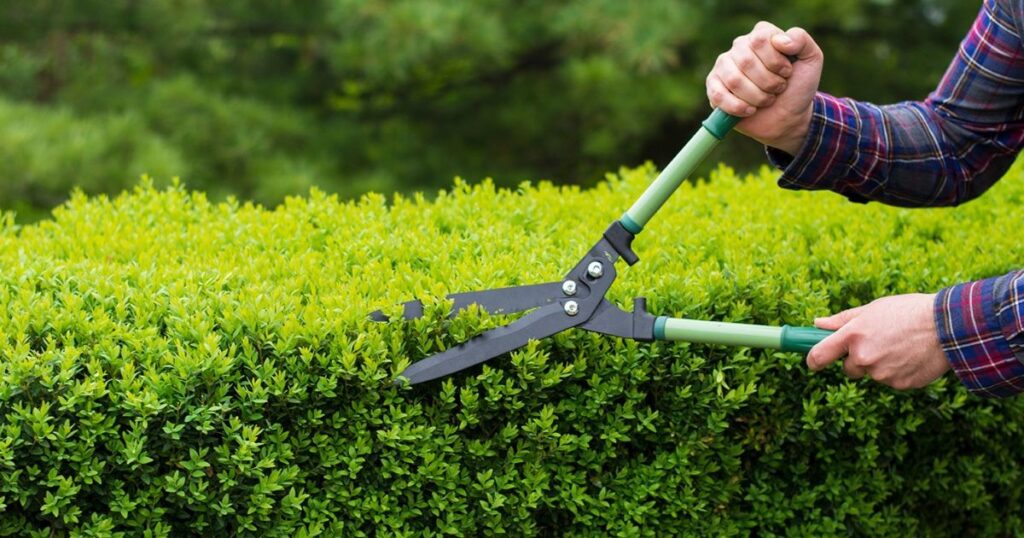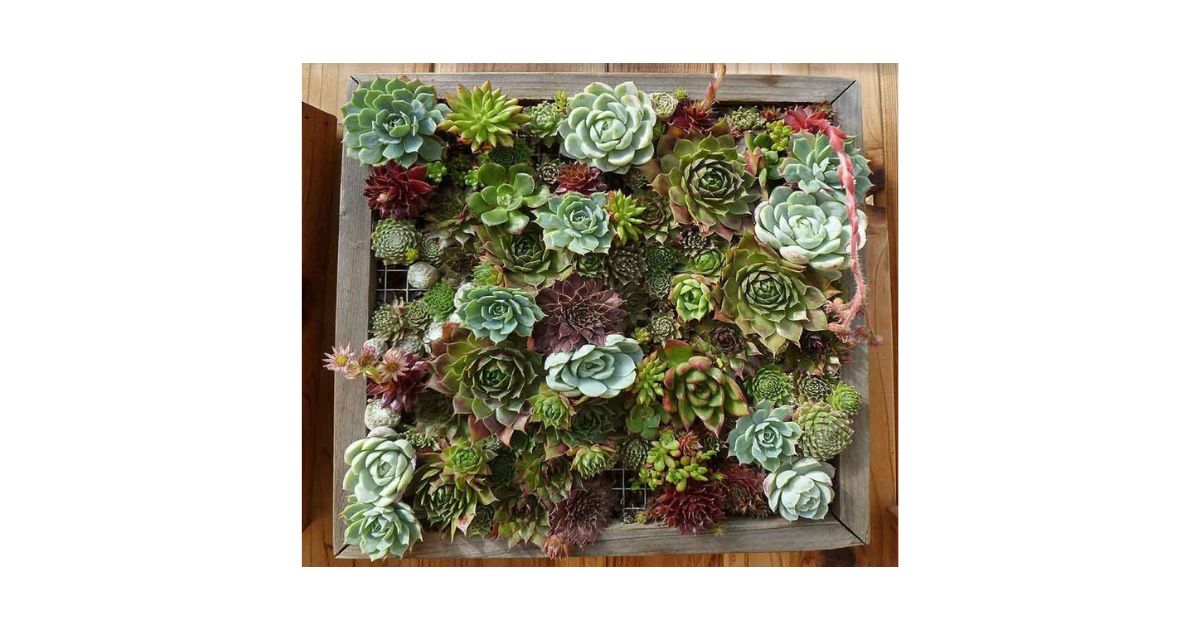Succulents are popular for their unique and attractive appearance, making them a favorite among gardeners and plant enthusiasts. However, like all plants, succulents can sometimes grow taller than desired.
If you’re wondering what to do when succulents get too tall, we’ve got the solution. With our expert tips and guidance, you can learn how to trim and propagate your succulents, ensuring they stay compact and beautiful. Don’t let those leggy succulents take over, take action today and keep your plants thriving. Join us to discover the secrets of succulent care.
When this happens, it can be a cause for concern, as the succulent may become unstable or lose its characteristic compact shape. In this article, we will explore various techniques and tips for managing tall succulents to maintain their health and aesthetic appeal.
Understanding Why Succulents Grow Tall
Before delving into how to address tall succulents, it’s essential to understand the reasons behind their elongation. Several factors contribute to succulents growing taller:
Insufficient Light
Inadequate light is one of the most common causes of succulent elongation. Succulents are sun-loving plants and require plenty of sunlight to maintain their compact and rosette shapes. When they do not receive enough light, they tend to stretch out in search of more.
Overwatering
Overwatering can lead to root rot, which compromises the overall health of a succulent. To compensate for damaged roots, succulents may grow taller as they reach for water and nutrients from the soil.
Aging
As succulents age, they often naturally grow taller. This is a normal part of their life cycle, and while you can’t stop the aging process, you can manage it to some extent.
Etiolation
Etiolation is a phenomenon that occurs when succulents are grown in low-light conditions. The plant elongates and becomes spindly as it seeks more light. Etiolated succulents are weaker and more susceptible to pests and diseases.
Now that we understand why succulents become tall, let’s explore some methods for addressing this issue and maintaining their health and aesthetic appeal.
| Key Points | Description |
| Understanding Why Succulents Grow Tall | Identify the causes of succulent elongation: insufficient light, overwatering, aging, and etiolation. |
| Proper Light and Care | Ensure the right amount of sunlight, monitor watering, and provide appropriate fertilization. |
| Pruning and Trimming | Pinch back the tops, remove leggy growth, and consider propagation to maintain compact growth. |
| Support and Staking | Use stakes to support tall succulents and prevent them from falling over. |
| Repotting | Repot tall succulents in a larger pot, prune the roots, and provide fresh, well-draining soil. |
| Companion Planting | Pair tall succulents with shorter companion plants to create visually balanced arrangements. |
| Caring for Tall Succulents in Winter | Adjust care routines during the winter, reduce watering, protect from cold, and limit fertilization. |
| Conclusion | Recap the importance of proper care and attention to maintain healthy and visually appealing succulents. |
Proper Light and Care
One of the most effective ways to prevent succulents from growing too tall is to provide them with the right conditions. Here are some tips to ensure your succulents receive proper light and care.
Choose the Right Location
Select an ideal location for your succulents, preferably one with plenty of direct sunlight. Most succulents thrive in full sun, which typically means at least 6 hours of direct sunlight per day. If you’re growing succulents indoors, place them near a sunny window or consider using grow lights to supplement their light requirements.
Monitor Watering
Overwatering is a common mistake when caring for succulents. Water your succulents sparingly and ensure the soil dries out completely between waterings. It’s essential to use a well-draining potting mix and containers with drainage holes to prevent waterlogged soil, which can lead to root rot and elongation.
Fertilize Appropriately
Succulents do not require heavy fertilization. Use a balanced, diluted, liquid fertilizer during the growing season (spring and summer) and reduce or stop fertilizing during the dormant season (fall and winter). Over Fertilizing can lead to excessive growth.
Pruning and Trimming

Pruning and trimming are essential techniques to manage tall succulents and promote a more compact growth habit. Here’s how you can do it.
Pinch Back the Tops
When you notice your succulents are getting too tall, you can pinch or cut back the tops of the plants. This encourages branching and a bushier growth pattern. However, if you’re wondering, succulents die after flowering it’s essential to know that not all succulents die after flowering. Some may die off after flowering, while others will continue to thrive and produce new growth. Use sharp, clean scissors or pruning shears to make clean cuts to avoid injuring the plant.
Remove Leggy Growth
If your succulent has already become leggy or etiolated, consider cutting off the elongated stems. This can be done by snipping the affected stems close to the base. The remaining rosette can continue to grow, and you can root the cuttings to propagate new plants.
Propagation
Propagation is not only a solution for leggy succulents but also a way to expand your succulent collection. Here’s how to propagate succulents
Select a healthy leaf or stem cutting. Ensure that it is free from disease or damage.
Allow the cut end to callus over for a day or two to prevent rotting.
Plant the cutting in well-draining soil, burying it just deep enough to provide stability.
Water sparingly, and over time, the cutting will develop roots and grow into a new plant.
Propagation not only helps manage the height of your succulent but also allows you to create more plants to share or expand your garden.
Support and Staking
In some cases, you may find that your succulent has grown too tall to support its own weight. If your succulent is top-heavy and at risk of falling over or breaking, staking and support can help.
Staking
Staking involves using a support structure to help the succulent remain upright. Here’s how to stake a tall succulent.
Select a sturdy stake, such as a bamboo rod or a dowel.
Gently push the stake into the soil near the base of the succulent, being careful not to damage the roots.
Secure the succulent to the stake using soft ties or twine. Be sure not to tie it too tightly, as this can damage the plant.
Staking will provide additional support to your tall succulent, preventing it from toppling over.
Repotting
Repotting is another effective method to manage tall succulents. Repotting allows you to reset the growth of the plant, encourage branching, and provide fresh soil and better drainage. Here’s how to do it.
Choose a Larger Pot
Select a slightly larger pot with drainage holes. The new pot should provide more room for the succulent to grow and establish a healthier root system.
Prune the Roots
When you remove the succulent from its old pot, inspect the root system. If the roots are circling and overcrowded, trim them back to encourage new growth and prevent further elongation.
Add Fresh Soil
Fill the new pot with a well-draining succulent mix. This mix should be specifically designed for succulents and cacti, providing the right balance of aeration and moisture retention.
Report Carefully
Gently place the succulent in the new pot, ensuring that it’s at the same depth as before. Fill the remaining space with soil and tap it down lightly to remove air pockets.
Water and Adjust
After repotting, water the succulent lightly and allow it to adjust to its new container. Do not fertilize for a few weeks to prevent over stimulating growth.
Repotting should be done carefully and infrequently, as succulents prefer to be slightly root-bound. It’s generally recommended to report when the plant has outgrown its current container, which may be every 2-3 years for most succulents.
Companion Planting
Another way to manage tall succulents is through companion planting. By pairing your succulents with shorter, compact plants, you can create an appealing garden or arrangement that maintains a balanced appearance. Here are some companion planting ideas:
Use Ground Covers
Plant low-growing ground covers around your tall succulents to cover the soil and create a more visually pleasing display. Ground covers like sedum, creeping thyme, or baby tears can work well alongside taller succulents.
Group Succulents of Different Heights
When arranging your succulents, create groupings of various heights. Taller succulents can provide a backdrop for shorter ones, creating a layered and attractive garden.
Choose Complementary Colors and Textures
Consider the colors and textures of your companion plants. Select plants that complement the color and texture of your tall succulents to create a harmonious composition.
Caring for Tall Succulents in Winter
During the winter months, succulents may naturally slow their growth, and some species enter a dormant period. It’s essential to adjust your care routine to ensure the health and well-being of your tall succulents during this time.
Reduce Watering
As succulents experience reduced growth and lower light levels in the winter, it’s crucial to reduce watering. Water sparingly, allowing the soil to dry out thoroughly between waterings. Overwatering in winter can lead to root rot.
Protect from Cold Temperatures
Some succulents are more cold-sensitive than others. If you live in an area with frost or cold temperatures during the winter, consider moving your succulents indoors or providing them with frost protection. Cold stress can damage the plant and lead to leggy growth.
Limit Fertilization
During the dormant season, avoid fertilizing your succulents or use a diluted, low-nitrogen fertilizer sparingly. Too much fertilizer can encourage excessive growth when the plant should be conserving energy.
FAQ’s
What can I do with a succulent that is too tall?
You can trim or behead the tall succulent to encourage branching and maintain a more compact shape.
Can I cut a succulent that is too tall?
Yes, you can cut a succulent that has grown too tall. This is often done to promote bushier growth and prevent the succulent from becoming leggy or top-heavy.
Can I cut the stem of a succulent?
Yes, you can cut the stem of a succulent, but it’s important to do so carefully and with a clean, sharp instrument to avoid damaging the plant. Succulents are often propagated from stem cuttings, and this can be a method to grow new plants or to remove unhealthy or overgrown parts of the succulent.
How do you keep succulents small?
To keep succulents small, you can control their growth by planting them in smaller pots, limiting their water and fertilizer intake, and providing less sunlight to slow down their growth.
Conclusion
Tall succulents can be managed and restored to their more desirable compact forms with proper care and attention. By providing adequate light, adjusting watering practices, pruning, repotting, and considering companion planting, you can ensure that your succulents remain healthy and visually appealing. Understanding the reasons behind tall succulents and addressing them promptly will help you maintain a beautiful and thriving succulent garden.










